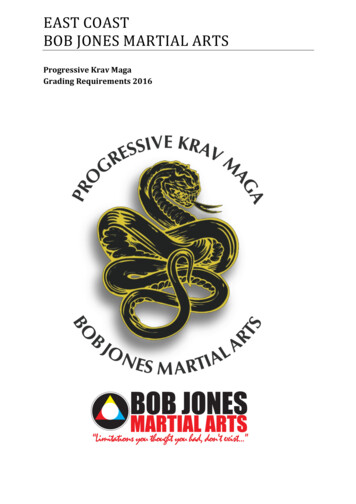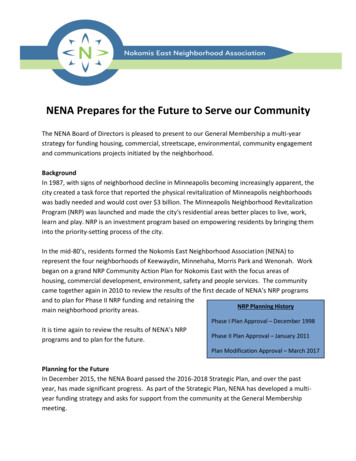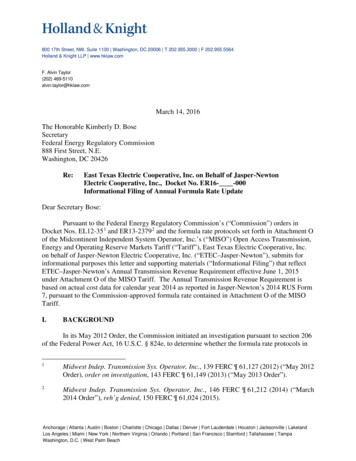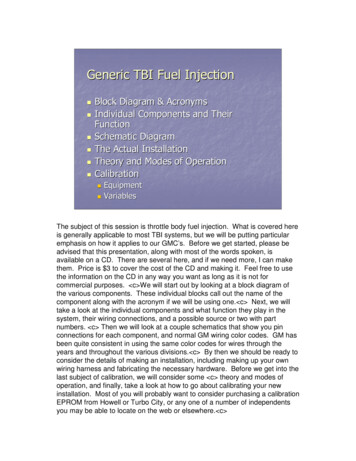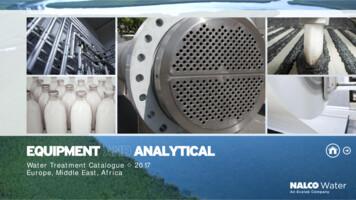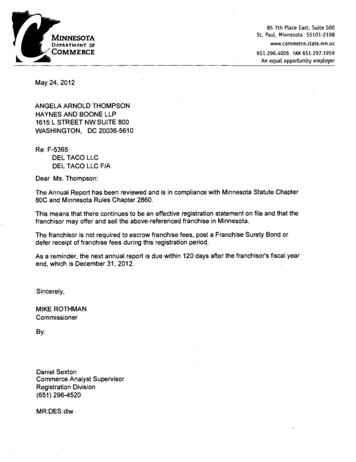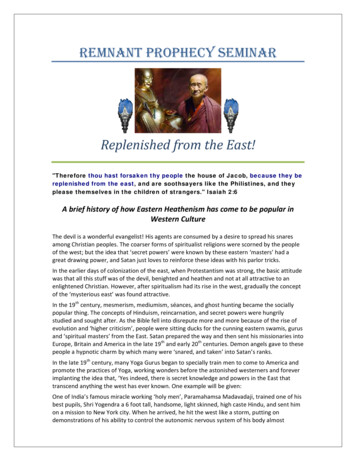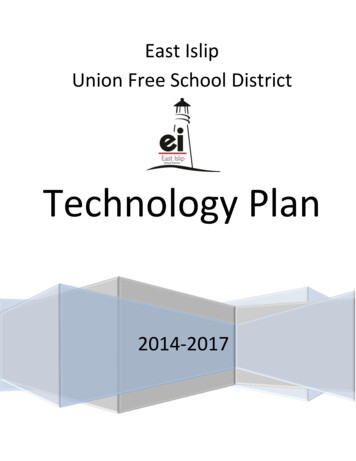
Transcription
East IslipUnion Free School DistrictTechnology Plan2014-2017
East Islip Technology PlanAcknowledgementsThe East Islip Union Free School District wishes to acknowledge the contributions of the 2013- 2014Technology Committee:Mark BernardBill BrennenRobert ChiarelliJames ConnellDebra GulinelloCarol Ann HennesseyDonna MarshalJerry OrlandoDeborah SmithWendy TurkingtonCarol WilsonRichard ZwycewiczPlan Contact InformationDistrict Name: East Islip Union Free School DistrictAddress:1 Craig B. Gariepy AvenueIslip Terrace, New York 11752Contact:Richard J. ZwycewiczExecutive Director of Student Achievement & Instructional TechnologyPhone:631.224.2080Years Covered: July 1, 2014 – June 30, 2017Page 1
East Islip Technology PlanTable of ContentsAcknowledgements. 1Plan Contact Information . 1Executive Summary. 3East Islip Union Free School District Mission Statement . 3Technology Mission . 3Core Beliefs for Educational Technology . 3Areas of Emphasis . 3Technology Integration Priorities. 3Vision . 4Current Technology Assessment . 4Equipment and Services . 4Classroom Technology Configurations for 2014 . 4Network System Upgrades. 5Wireless Network Coverage . 6Security & Privacy . 6Filtering (Children’s Internet Protection Act Compliant) . 6E-mail Services and Filtering . 6Software . 7Network Operating Systems . 7Workstation Operating Systems . 7Web Development . 7Curriculum Integration . 7Staffing and Training . 8Grade-appropriate Curriculum Integration . 8National Educational Technology Standards (NETS) for Students . 13Action Plan . 17Three- Year Estimated Budget . 18Evaluation and Review . 19Appendix A: Network Schematic . 20Appendix B: Wireless Access Points . 21Appendix C: Software Programs . 28Appendix D: Professional Development Survey . 29Appendix E: Acceptable Use Policies . 39Page 2
East Islip Technology PlanExecutive SummaryEast Islip Union Free School District Mission StatementOur mission is to celebrate our students' uniqueness and maximize their ability to attain excellence aswe guide and prepare them to become responsible citizens of the world.Technology MissionThe East Islip School District supports the premise that all students in our school district will be able toaccess and effectively use any information needed to function as a productive member of the 21stcentury society. Our mission, vision, beliefs, and goals serve to lead us to the realization that in theglobal networked environment, skills that revolve around technology and communication are essentialto the success of students in the 21st century workforce.Core Beliefs for Educational Technology Engagement and learning increase with the use of technology.Technology supports differentiation of learning.Active participation and contributions to the learning process increase with the use oftechnology.Project and inquiry based learning experiences are enhanced with the use of technology.Technology skills are best learned in context through project and inquiry based learning.Technology supports broader collaboration opportunities.21st Century communication requires fluency in the use of technology.Areas of Emphasis Support equity among schools in the provisioning of technology.Promote the effective use of technology to improve student performance.Integrate technology in the curriculum.Provide the greatest possible access to information resources.Encourage and support new initiatives and innovation on an ongoing basis.Facilitate instructional, administration, and managerial applications.Support the allocation of staffing resources to technology integration and staff development.Technology Integration Priorities Providing a variety of learning environments and opportunities in classrooms, library mediacenters and labs, using the full array of available technologies including distance learning,internet, multimedia, and equipment that is becoming increasingly portable, mobile and globallyconnected.Providing support for students with special needs, including assistive and adaptive technology.Facilitating enhanced parent communication.Providing students with the skills they need to use technological resources beyond the schoolday in an educationally sound and safe manner.Page 3
East Islip Technology Plan Providing opportunities for students and teachers to collaborate with peers within schoolbuildings, in other schools and in the global community.VisionInformation technologies will continue to impact teaching, learning, and management. This plan and itsproposed initiatives recognize that such a transformation will not be accomplished by focusingexclusively on bringing the technology into existing administrative and instructional practices, or bymerely automating existing procedures. Re-conceptualizing teaching, learning, and managementactivities will be accomplished simultaneously with the implementation of information technologysystems. In order to obtain the maximum benefit from new and emerging technologies, we must firstenvision the type of schools and classrooms we want and need. Students, teachers, staff andadministrators need access to technology and real-time information, and must be trained toappropriately integrate technology, and to be more productive, efficient and successful in their careers.This document reflects our district technology planning - a dynamic process whereby we havedeveloped consensus about priority goals and tasks relating to technology, and to the realization of ourschools’ improvement objectives.Current Technology AssessmentEquipment and heanMimioSmartBoardMacintoshApple 200Classroom Technology Configurations for 2014Grades K-2 Teacher Computer StationInteractive WhiteboardStudent Workstations (2-4)Page 0110
East Islip Technology PlanGrades 3-5 Teacher Computer StationComputer ProjectorInteractive WhiteboardDocument CameraStudent Workstations (3-5)Middle School (6-8) Teacher Computer StationComputer ProjectorInteractive WhiteboardHigh School (9-12) Teacher Computer StationComputer ProjectorWireless CapabilityNetwork System UpgradesOver the past three years, the aging Cisco network infrastructure has been replaced with a new Brocadenetwork. This included replacing every switch, the web filter, and the firewall. The Cisco infrastructurecould not support future growth and the needed increase of bandwidth for instructional use. Theinternet pipe was originally 20MB and has been increased to 100MB which required the new firewall(SonicWALL) as the previous firewall could not function with the increased traffic. A new Brocade MLXcore switch was installed at the high school which will support 100GB links and new ICX6450’s in all theother network closets. The transition from a Novell Netware environment to Active Directory has beencompleted by unifying group policies and the desktop image configurations.The bandwidth between the high school, Timber Point, Connetquot, and JFK has been increased to 10GBlinks while the district office, RCK, and the middle school are at 1GB links because the fiber betweenthese buildings cannot support 10GB. All equipment that was installed is capable of supporting 10GBlinks for future growth. There is at least one POE (power over Ethernet) switch in every closet. There arecurrently 26 closets.Virtual Local Area Networks (VLANS) in each building have been better defined. VLANs can be viewed asa group of devices on different LAN segments which can communicate with each other as if they wereall on the same physical LAN segment. Prior to the reconfiguration, there was one large network spreadacross all buildings. This did not allow for the separation of student, staff and administrative data. Thereconfiguration results in more efficient processing and increased security. Memory has been added tothe VMware servers as well as an additional SAN (storage area network). A storage area network deviceis a dedicated system that contains disks for storing information. As a result, a storage area networkPage 5
East Islip Technology Planenables the servers within a network to be used for running applications and processing data, not forstoring large amounts of information.See Appendix for a Network Schematic DiagramWireless Network CoverageWireless networking access points will continue to be deployed in all schools for increased coverage.Special projects and needs will determine the priority of 24See Appendix for Future Wireless Access Points.JFK20RCK21CES20TP20Security & PrivacyBoth hardware and software solutions safeguarding the district network have been deployed, includinga hardware firewall, anti-virus software and Windows security policies.Hardware FirewallThe hardware firewall is SonicWALL. The district owns the appliance and subscribes for updates througha BOCES contract.Anti-virus SoftwareVirus protection is provided through Microsoft System Central (Microsoft Essentials). Updates areimmediate.Security PoliciesWindows 7 workstation polices control desktop security on the PC workstationsFiltering (Children’s Internet Protection Act Compliant)Our current web filtering system appliance and service is provided by EdgeWave iPrism and is an annualcontract provided through BOCES. The iPrism web filter can only handle Internet Service Provider trafficbelow speeds of 105mb.E-mail Services and FilteringE-mail accounts are provided through Microsoft Exchange for all staff. Student e-mail accounts arecurrently not provided, however, we will be piloting Microsoft Office 365 which will have the potentialto provide students with email and collaboration tools. Email-filtering is accomplished throughMicrosoft Exchange with Microsoft Security Essentials and spam control is accomplished usingBarracuda.Page 6
East Islip Technology PlanSoftwareLarge scale licensing of basic productivity, security and network monitoring software continues to takeplace. Additional district licensing for tool software, multimedia authoring and web page developmenthas been provided. Content-area software needs are assessed by district directors and have beenpurchased as needed. Planning for future software acquisition will continue to occur cooperativelyacross buildings through our district directors in collaboration with the Instructional TechnologyDepartment.New paradigms of teaching and learning with technology will increasingly make use of software tools forgathering, synthesizing, representing and publishing information and ideas, for web-based andmultimedia projects using the internet and other online resources, rather than discrete software titlesfor content. The term Web 2.0 describes the rise of social networks and the ability for student to easilypublish work on the Internet. Web 2.0 also describes sophisticated computer applications that arehosted on the internet rather than on local machines (cloud computing). We continue to subscribe toonline curricular resources for instruction and plan to expand our investment in online curriculum andother content resources for professional development, administrative support and technical assistance.See Appendix for a list of software programs.Network Operating SystemsDistrict network servers operate on the Windows 2008 platform which allows more granular controlover Windows 7 systems.Workstation Operating SystemsAdministrative and instructional computers run on the Windows 7 operating system. All Windows XPmachines have been upgraded.Web DevelopmentEach school has a webpage. The district website and domain are hosted by Syntax. Teacher websitesare hosted by SchoolWorld. Administrative forms, curriculum guides and resource materials areavailable in electronic format for downloads. www.eischools.orgCurriculum IntegrationThis initiative involves the effective integration of technology skills for improving academic achievementthrough understanding, practice and good decision making.Students learn electronic research skills and utilization of on-line databases, as part of libraryinstruction. Students learn, practice, and develop technology-based skills through curriculum. Theseinclude but are not limited to word processing, spreadsheet, graphics and graphical organization,presentation, and online research. Grade 6 and 8 students also participate in the Easy Tech Program tofurther build and assess technology skills.Page 7
East Islip Technology PlanStudents are expected to achieve a reasonable degree of technological literacy and independence by theend of grade 8.Students will demonstrate an understanding of a variety of software applications through accessing,processing and transferring or recording information directly related to curriculum.Students will utilize software applications and online resources to create and analyze informationappropriate to the curriculum, and make informed decisions related to 21st century problem solving.Staffing and TrainingThe district currently employs or contracts to the following positions in order to maintain our technologyinfrastructure as well as develop instructional technology programs in all curriculum areas.Senior Office Applications Specialist – The role of this person is to manage the student informationsystem, prepare state reporting, and work in conjunction with the CIO to manage all relevant studentdata.Office Applications Specialist – The role of this person is to support the Executive Director and SeniorOffice Applications specialist in the day to day management of the data center and all other technologyprograms.Senior Network Engineer - The role of this employee is to manage and oversee all technology assetsfrom a mechanical point of view. Duties include software upgrades, LAN and WAN management,management of all user accounts, and other such responsibilities.Junior Network Technician – One individual fills this role. Their responsibilities include physical upgradeand repair of hardware, software installation, printer maintenance, and other related duties.Computer Lab Teaching Assistants are assigned to each school building and will carry out duties relatedto the operation of computers, printers and other related systems. These responsibilities will beassigned by the building principal and/or central office administrator.Executive Director for Student Achievement & Instructional Technology - The role of this person is tooversee all the staff listed above. They are the primary administrator for all things related toinstructional technology.Grade-appropriate Curriculum IntegrationK-12 Technology Guidelines(Originally Published by ISTE – Refined and Developed by Nassau BOCES)BASIC COMPUTER OPERATIONS AND CONCEPTSK-23-56-89-12Identify basic computer hardwareIRMMTurn computer on and off properlyI, RMMMUse a mouseI, RMMMOpen and close computer programsI, RMMMStudents will learn and be able to:Page 8
East Islip Technology PlanUse basic computer vocabularyIRMMIdentify basic computer functionsIRMMInsert and remove USB Drives and CDsIR, MMMUse Save and Save As commandsI, RMMMPrintI, RMMMLog in and out of networkIMMMToggle between two open programsIMMMSkilled in using scannersIRMMIRMK-23-67-89-12Demonstrate appropriate use of computers; (refer to AUP policy for details)IRRMDemonstrate appropriate computer etiquette (refer to AUP policy for details)IRMMRespecting the privacy of all usersIRMMObey copyright laws regarding student generated materialIRMAppropriately cites resources using prescribed formatsIRMSkilled in using digital camerasSOCIAL, ETHICAL, AND HUMAN ISSUESStudents will learn and be able to:Use appropriate judgment upon entering Internet sitesIIRMCiting material taken from another source, under issues of plagiarism as theyapply to information technologyIRMMDemonstrate an understanding of and observe software licensing restrictionsIRMMDemonstrate an understanding that appropriate school speech extends toelectronic publication and communicationIRMMKnows about the issues surrounding cyber bullyingIRMMTECHNOLOGY PRODUCTIVITY TOOLSK-23-67-89-12Become f
Our current web filtering system appliance and service is provided by EdgeWave iPrism and is an annual contract provided through BOCES. The iPrism web filter can only handle Internet Service Provider traffic below speeds of 105mb. E-mail Services and Filtering E-mail accounts are provided through Microsoft Exchange for all staff.


